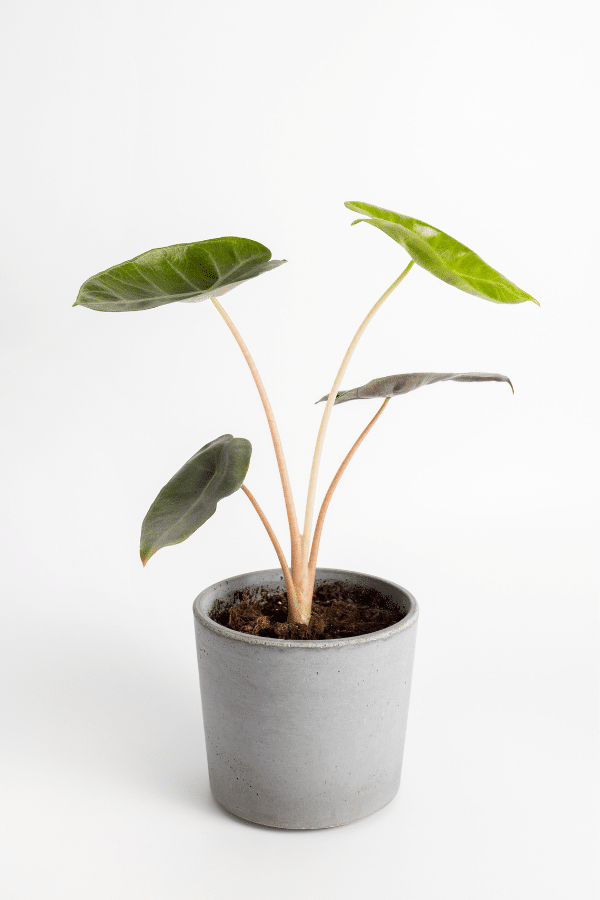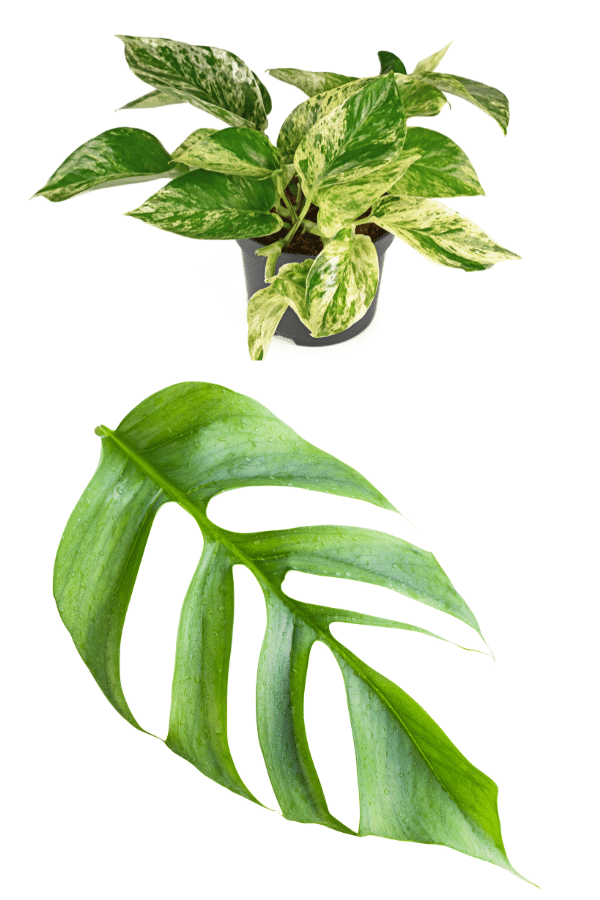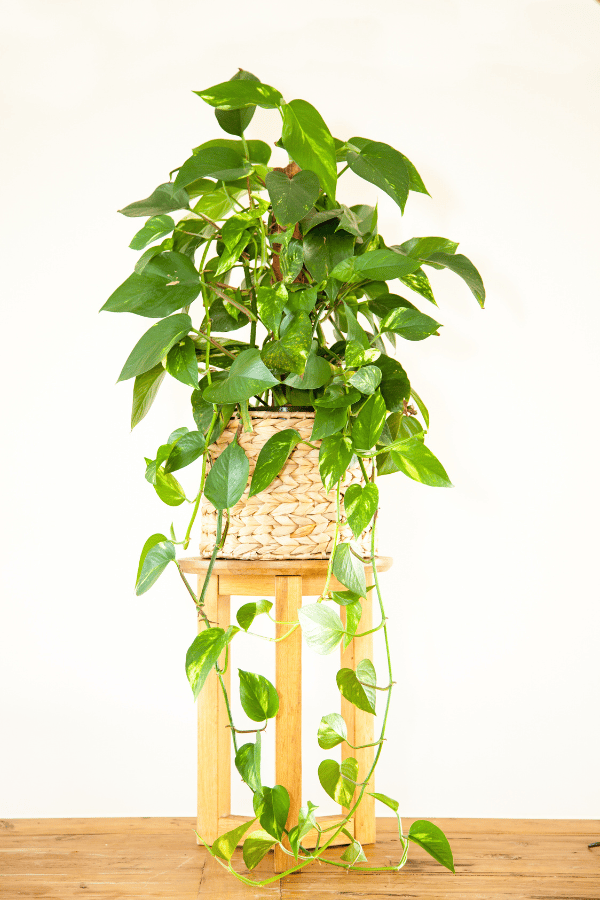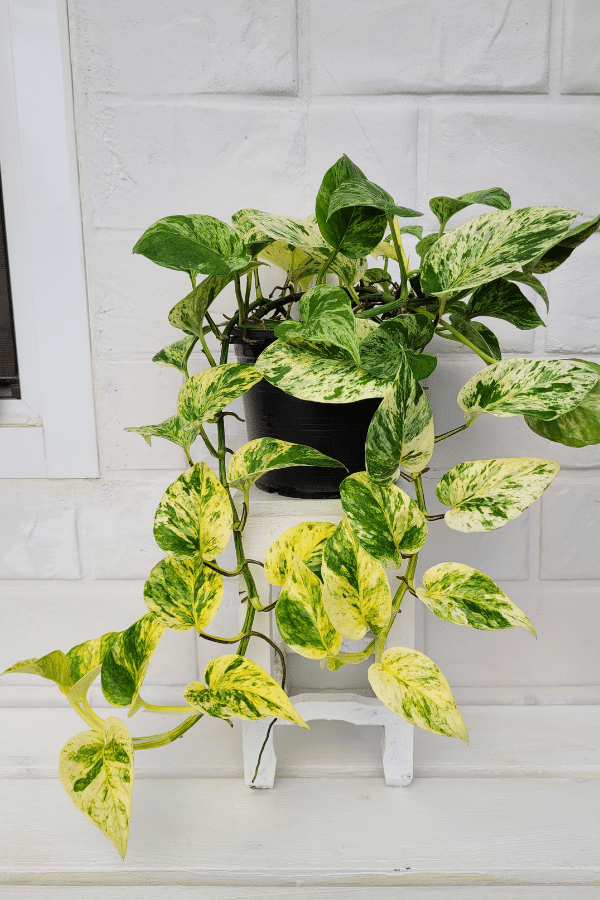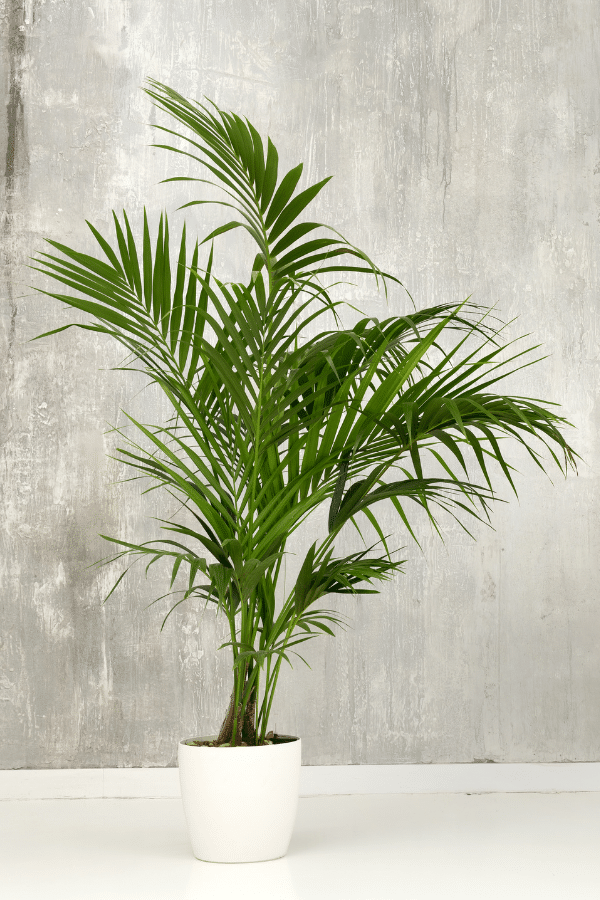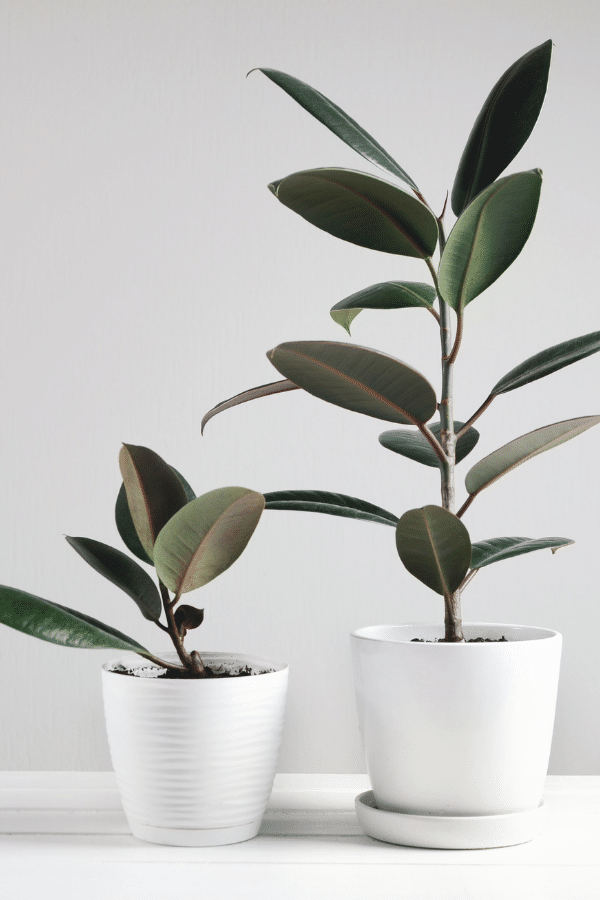Philodendron Propagation
Philodendron propagation is a simple and rewarding process for any houseplant enthusiast. Propagating these popular and hardy indoor plants saves you money and allows you to share your love for these attractive and low-maintenance plants with friends and family.
I took a cutting from my mom’s Heartleaf Philodendron that she has had for 30+ years and it has successfully grown new roots and even new leaves! So in this article, I’ll go over all the different methods you can use to propagate Philodendron and I’ll show you what I did with pictures along the way!
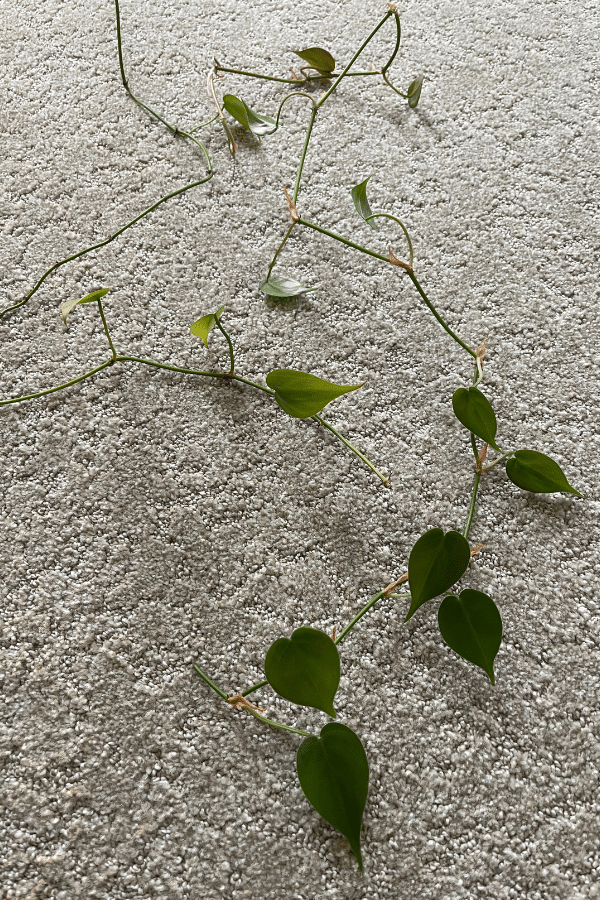
When to Propagate Philodendron
Propagating a Philodendron at the right time is crucial for its success. Ideally, propagating during the active growing season, which is typically from spring to early summer, is the best. During this period, the mother plant is putting out new growth, making it the best time for your cuttings to establish roots and grow.
It’s also essential to keep an eye on the mother plant’s overall health. Ensure it is well-maintained and properly cared for before attempting to propagate. A strong, healthy mother plant will produce the best cuttings, leading to better success rates in propagation.
Remember to always use clean and sterilized tools when taking cuttings to avoid infection or damage. Following the correct procedure and timing will help ensure that your Philodendron propagation efforts are successful and that you can enjoy new, thriving plants in your collection.
Propagation Methods for Philodendrons
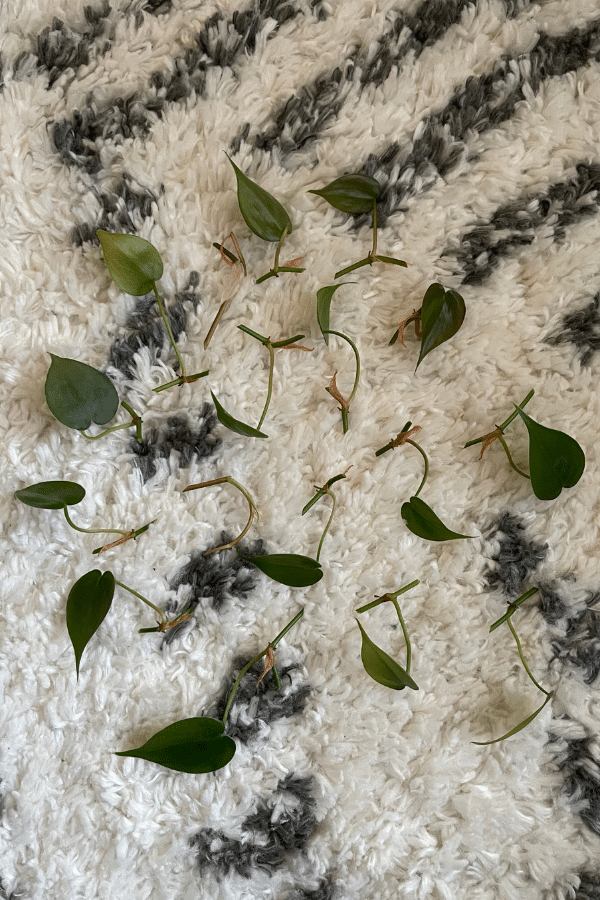
Air Layering Philodendrons
Air layering is an effective method for propagating your Philodendron. It allows the plant to form roots before you actually cut the plant. To begin, select a healthy, mature stem and make a clean, slanted cut about one-third of the way through it. Wrap the cut area in a moistened medium, such as sphagnum moss or peat moss, and then cover it with plastic wrap. Secure the bag with ties to maintain humidity. In a few weeks, roots will begin to form. Be patient and let the roots grow. Once roots have grown, you can then remove the plastic and plant the rooted section in a pot with well-draining potting soil.
Philodendron Propagation In Water
Water propagation is a popular choice for Philodendrons. First, take a cutting from the plant, ensuring it has a healthy stem and at least one leaf. Place the cutting in a jar or vase filled with clean water, making sure the cut end is submerged. Keep the water level consistent and change it every week to maintain freshness. In a few weeks, you’ll see roots forming. Once roots have developed, transfer the cutting to a pot with a good drainage hole and potting mix suited for Philodendrons.
Propagating Philodendron In Soil
To propagate your Philodendron in soil, start by taking a stem cutting with a healthy leaf and place it in a pot with moist potting soil. Ensure that the pot has a drainage hole for proper drainage. Alternatively, create a potting mix from equal parts peat moss and perlite, which promotes root growth and offers good drainage. Place the cutting, cut side down, into the soil or mix and provide adequate water and light. In a few weeks, the cutting will root, and new growth will emerge.
Philodendron Propagation In Sphagnum Moss
For this method, prepare a container of moist sphagnum moss. Take a cutting or a few cuttings from your Philodendron, ensuring it has a healthy stem and at least one leaf. Insert the cut end of the stem into the sphagnum moss, covering it with the moss and pressing gently to ensure good contact. Place the container in a warm, well-lit area and monitor the moisture level, maintaining consistent dampness. Roots should form within a few weeks, and you can then transfer the rooted cutting to a pot with well-draining potting soil.
Philodendron Propagation In Perlite
Perlite propagation is another option for growing new Philodendron plants. Begin by filling a pot or container with moistened perlite. Take a stem cutting with a healthy leaf and insert the cut end into the perlite. The perlite should be damp but not overly wet, as excess moisture can lead to root rot. Keep the cutting in a warm, well-lit area and maintain consistent perlite moisture. Once roots form, usually within a few weeks, transplant the cutting into an appropriate pot with a drainage hole and a suitable potting mix.
Where to Take Cutting From

Top Cutting
To propagate your philodendron plants, you can begin with top cutting. Locate a healthy stem with several leaves and a growth point, or the tip of the stem. Using clean, sharp scissors, make a cut approximately 1/4 inch below the node, where the leaf emerges from the stem. This portion of the stem contains the node cuttings required for successful propagation.
Mid Cutting
Another option for Philodendron propagation is taking a mid cutting. Identify a healthy stem with at least three leaves. Make a cut 1/4 inch below the lowest leaf on the stem, ensuring that the cutting includes at least one node. Remove the bottom leaf from the cut stem, which will leave at least two leaves for photosynthesis and growth. Mid cuttings are a great way to utilize the stem segment between top cuttings and bottom cuttings for successful propagation.
Bottom / Stem Cutting
Finally, consider taking a bottom / stem cutting for Philodendron propagation. This method involves using the remaining stem sections after top and mid cuttings have been removed. Ensure that there is at least one node on the cut stem, as it is crucial for the development of roots and new growth. You can take multiple bottom / stem cuttings from a single plant, as long as each cutting has a node.
Remember to keep your tools clean and sanitized, and ensure your Philodendron plants are well-cared for to achieve successful propagation. By utilizing various cutting methods, you can create new, healthy philodendron plants that will flourish in your home or garden.
How to Cut Philodendron for Propagation Step by Step
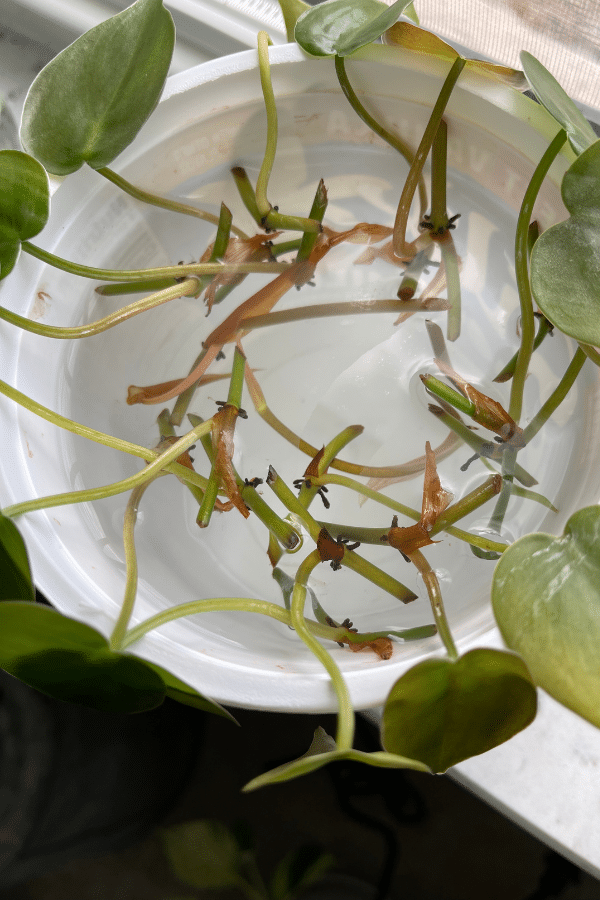
Preparation
Before you begin propagating your Philodendron, gather the necessary tools and ensure they are clean and sanitized. You may use a pair of scissors, knife, or pruners for cutting. To clean your cutting tools, simply wipe them with rubbing alcohol. This will help prevent the transfer of bacteria and fungi to your plant.
Take Cuttings
Find a healthy-looking stem with at least one or two nodes to take cuttings from your Philodendron. A node is the point on the stem where a leaf is connected. The node is a crucial part for successful propagation, as it is the point where new roots will emerge. Make a clean cut just above the leaf node, at a 45-degree angle. The cut should be 3-4 inches in length, avoiding damage to the main plant.
Remove Lower Leaves
After taking your cuttings, remove the lower leaves from the stem. Retaining only the top one or two leaves will allow the cutting to focus its energy on developing new roots. Using your clean scissors or pruners, gently cut away the lower leaves, being careful of the stem or leaf nodes. If you wanted to use a rooting hormone, now is the time to do so. You would dip the cut end of the stem into the hormone powder and then plant it into the propagation medium. As you can see in the picture, I only saved one leaf, but you can certainly do more.
Place In Propagation Medium
The final step is to place into a propagation medium of your choice, as mentioned above. Wait for roots to grow and once the roots have secondary roots or are three inches in length, it’s time to plant into soil.
Caring for Philodendron After Propagating
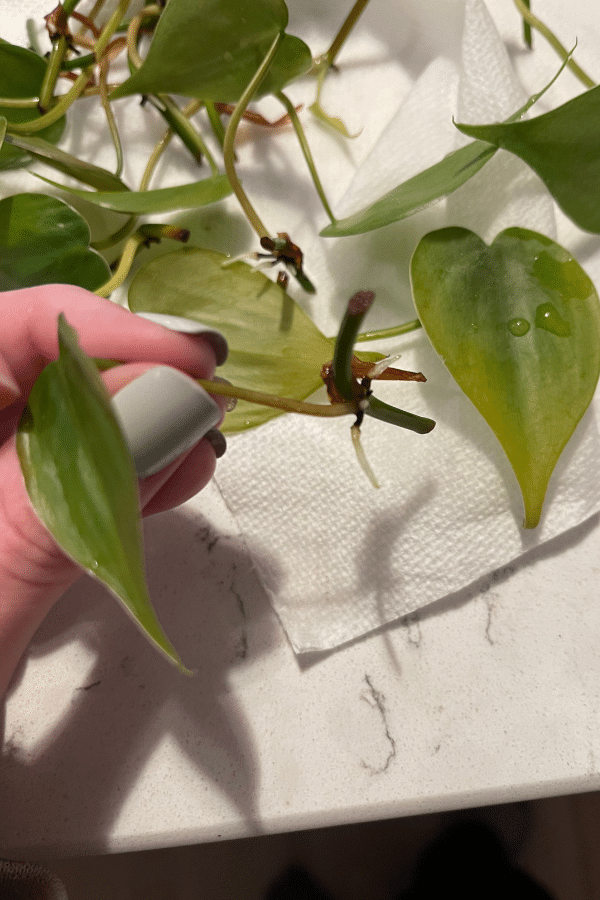
Best Lighting for Philodendron Propagations
After propagating your Philodendron, you need to provide the right lighting conditions for your new plant. Place your propagations in a spot with bright indirect light. Too much direct sunlight may cause the trailing vines to become scorched, while insufficient light may hinder proper growth.
Best Temperature & Humidity for Propagated Philodendrons
Temperature and humidity play a vital role in ensuring successful propagation of philodendron plants. Maintain a temperature range between 65°F to 80°F (18°C to 27°C) and a humidity level of 60% or higher. These conditions will mimic the natural environment of Philodendrons, promoting a healthy root system and preventing issues like root rot, which can be caused by overwatering.
Potting Philodendron Propagations Into Soil
When it’s time to transfer your propagations into soil, choose a well-draining potting medium that retains some moisture without becoming too damp. A mixture of peat moss or coco coir and perlite can provide a great balance for your new Philodendron plant propagations. Gently place the new roots into the potting medium, taking care not to damage the delicate root system.
FAQ
When Will Grow New Roots?
Patience is key when propagating Philodendron plants. The development of new roots depends on several factors, including the cutting’s health, the environment, and even the specific variety of Philodendron. 2 to 4 weeks is a good time estimate for when it will grow new roots, as long as it is given the proper conditions and taken during the late spring/early summer timeframe.
When Will It Grow New Leaves?
The growth of new leaves is another exciting milestone for your Philodendron propagations. Once the new roots have established themselves in the potting medium, your plant will begin to focus on above-ground growth. This may take anywhere from a few weeks to a couple of months, depending on the variety and growing conditions the plant is given. Keep providing consistent care and you’ll see new leaves emerging from the vines of your young Philodendron plants.

